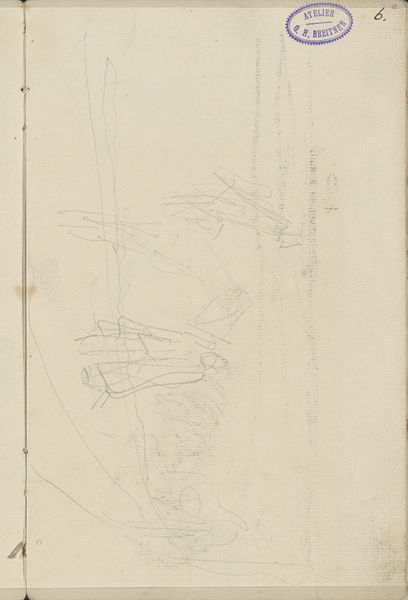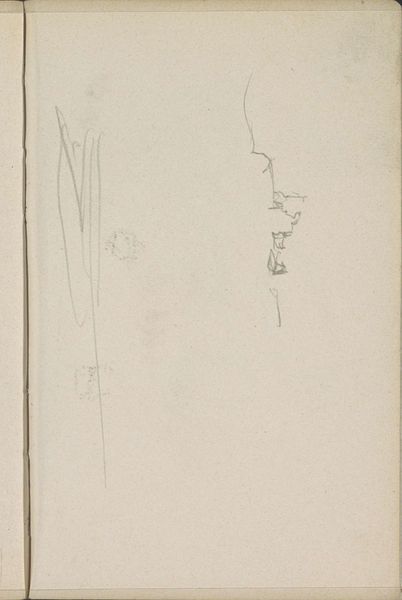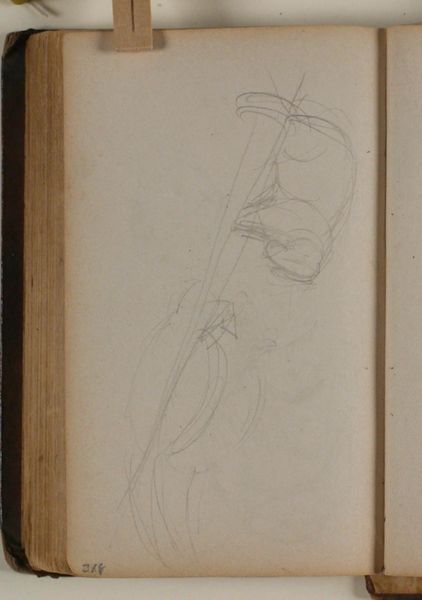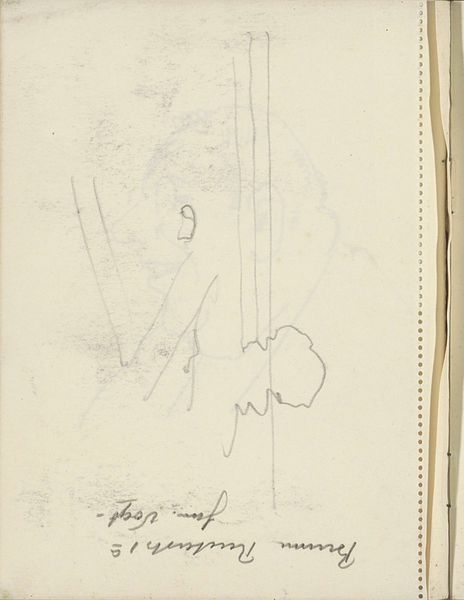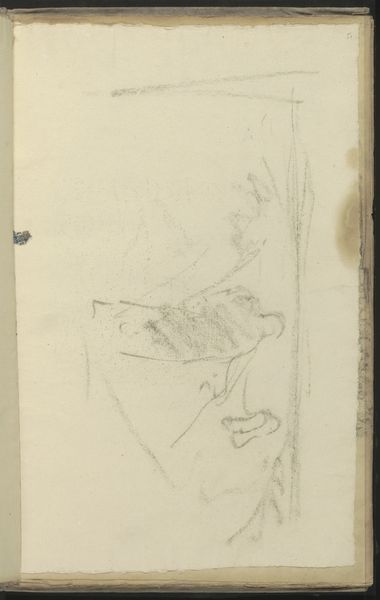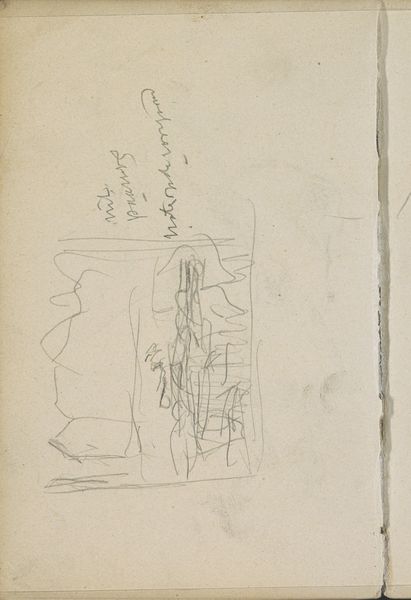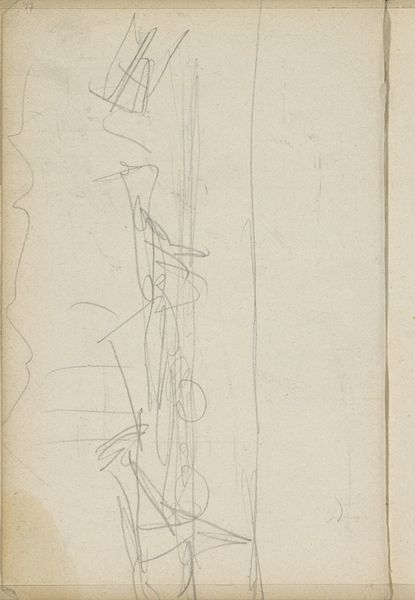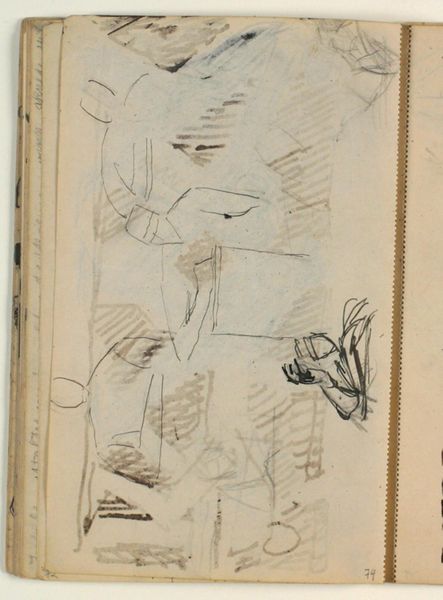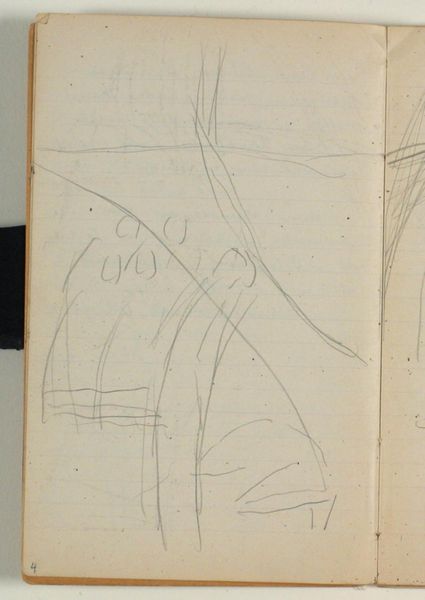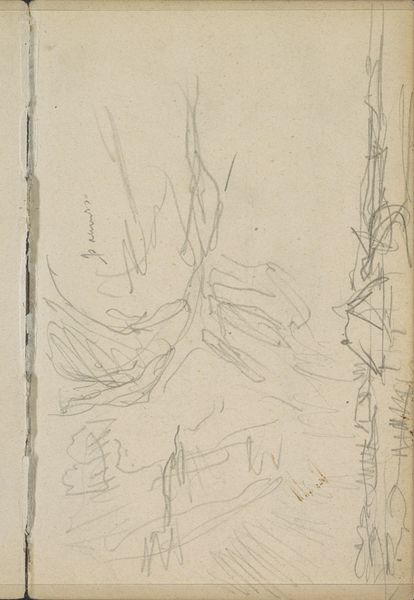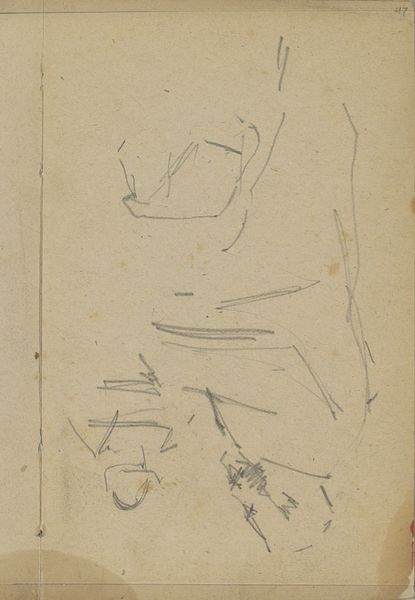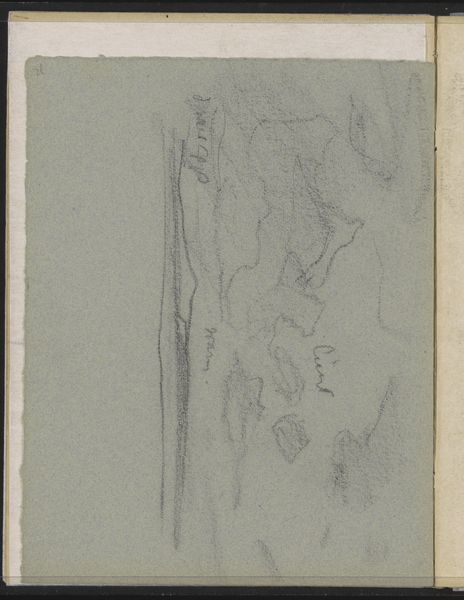
Studier af ornamentbånd efter kalkmalerier, samt studie af kandelaber med farveangivelser 1906 - 1910
0:00
0:00
drawing, paper, pencil
#
drawing
#
paper
#
pencil
Dimensions: 161 mm (height) x 96 mm (width) (bladmaal)
Curator: Here we have Niels Larsen Stevns' "Studier af ornamentbånd efter kalkmalerier, samt studie af kandelaber med farveangivelser," dating from between 1906 and 1910. It's a pencil drawing on paper, currently held here at the SMK. Editor: My first thought is about how skeletal it feels. The stark pencil lines, the ghostly forms emerging from the page...it has a transient, almost archaeological quality. Curator: That's interesting. I see it more as an act of preservation. Larsen Stevns was deeply interested in Danish cultural history and these mural ornaments in the churches would've represented an important public display of national identity at the time. Reproducing these was akin to documenting our national self-perception. Editor: And that act of documentation, framing those earlier images and reusing them within another system feels layered with its own set of agendas, right? Was there a political imperative underscoring Stevns' preservation? I think it asks broader questions about who gets to write history and how public spaces play a role in solidifying particular national narratives. Curator: There's definitely an element of constructing a visual lineage. Stevns saw himself as continuing a tradition. In many ways, this drawing operates as his source material, setting him on the path to decorate the University of Copenhagen’s Assembly Hall. He went on to directly use elements and even extend patterns observed from the study. Editor: So, a deliberate invocation of tradition for legitimization. It’s all a negotiation between past and present. It makes me think about accessibility, too. What was the role of a public like the assembly hall meant to play compared to its medieval antecedents? It prompts a vital dialogue between artistic legacies, modern adaptations, and our own contemporary re-readings. Curator: Absolutely. And thinking about the material, the choice of pencil—so immediate, so reproducible—highlights the democratizing potential of visual culture and public education in that moment. It's quite revealing, isn’t it? Editor: Yes, seeing this artwork encourages so many questions, prompting one to examine how even preliminary sketches partake in the historical dialectic. It serves as an important reminder that artistic creation has meaning well beyond its own genesis.
Comments
No comments
Be the first to comment and join the conversation on the ultimate creative platform.

